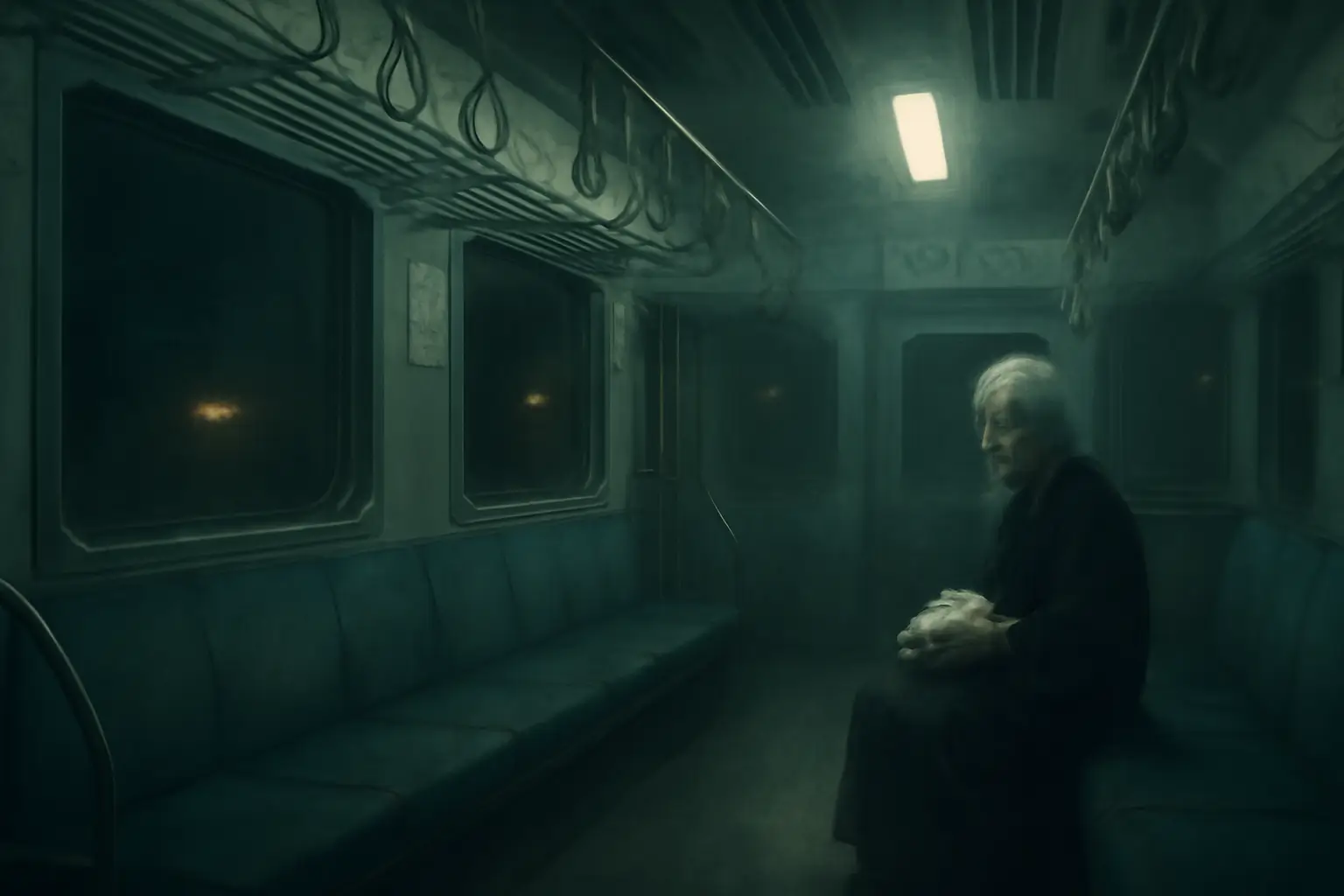They say the last train on Tokyo’s Yamanote Line stops running at 12:30 AM. They’re wrong. There’s one more train that comes after midnight—but it doesn’t appear on any schedule. The passengers who board it are carrying something invisible, something too heavy to bear alone. And sometimes, just sometimes, they come back different. Or they don’t come back at all.
What you’re about to read was found scribbled in desperate handwriting, left behind at an internet café in Shibuya. The owner swears a woman wrote it over several sleepless nights, then vanished without collecting it. He tried to throw it away three times. Each morning, it reappeared on his desk.
I don’t know if this story is true. But after reading it, you’ll find yourself looking differently at empty train cars and the strangers who ride them in the small hours of the night. You’ll wonder what they’re carrying. And more disturbingly, you’ll start to wonder what you’re carrying too.
Some stories find their way to the people who need to hear them. Maybe this one found its way to you.
I found this story buried in a dusty folder at a small internet café in Shibuya. The owner, an elderly man with thick glasses, handed it to me after I mentioned my research on urban legends. “A customer left this,” he said in broken English. “She never came back for it.” The handwritten pages were in English, with shaky handwriting that looked urgent, desperate even.
I don’t know who wrote it. But I believe every word.
My name doesn’t matter now. What matters is what I saw on the Yamanote Line three months ago. I’m writing this because I need someone to know. I need someone to believe me before I disappear completely.
It started on a Tuesday night in November. I was working late at my teaching job in Shinjuku. The last train home was at 11:47 PM, and I barely made it. The platform was nearly empty—just a few salary men swaying from too much beer and a young woman in a school uniform.
The train arrived exactly on time. That should have been my first warning. In three years of living in Tokyo, the last train was always at least two minutes late.
I stepped into the nearly empty car. The fluorescent lights flickered in that way that makes your skin look corpse-pale. I found a seat near the middle and pulled out my phone. No signal. Strange, but not unheard of in certain tunnels.
The doors closed with their usual mechanical hiss. But something felt wrong. The train was too quiet. Even on late trains, you could hear the low hum of conversations, the rustle of newspapers, someone’s music bleeding through headphones. This train was silent as a tomb.
I looked around more carefully. The salary men from the platform weren’t there. Neither was the schoolgirl. In fact, I was completely alone except for one other passenger.
An old woman sat at the far end of the car. She wore a faded black kimono and had her head bowed, gray hair falling like a curtain over her face. Her hands rested on a small bundle in her lap. She was perfectly still, so still I wondered if she was breathing.
The train pulled away from Shinjuku, but something was wrong with the route. We should have stopped at Yoyogi next, then Harajuku. Instead, we entered a tunnel that seemed to stretch on forever. The windows showed nothing but black rushing past.
I checked my watch. We’d been in the tunnel for ten minutes. Even the longest tunnel on the Yamanote Line took less than three. My mouth went dry. I tried to stay calm, but my hands were shaking.
That’s when the old woman raised her head.
Her face was ancient, more ancient than should be possible. Deep lines carved her skin like dried riverbed. But her eyes—her eyes were young. Young and full of a sorrow so deep it made my chest tight just looking at her.
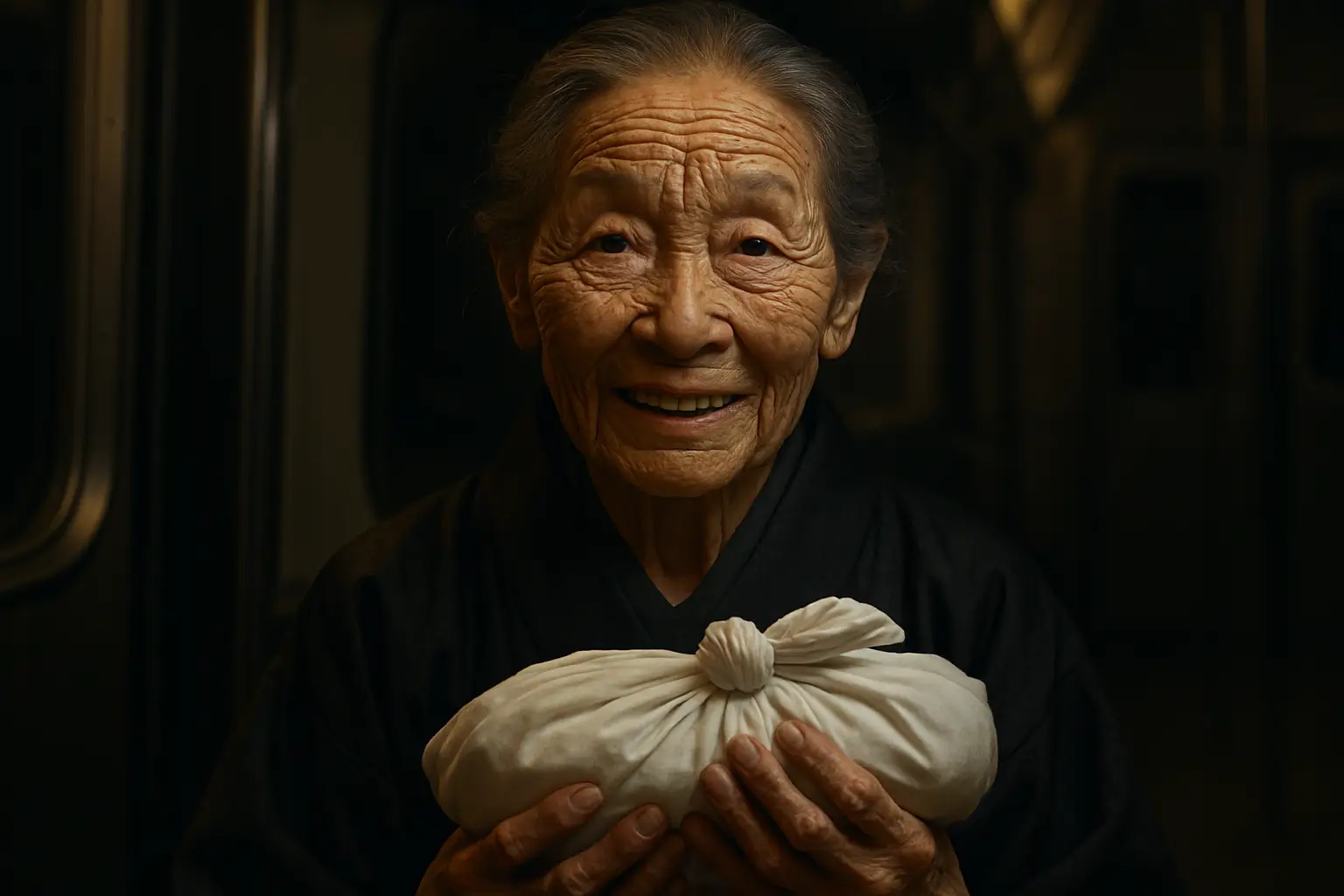
She smiled at me. Her teeth were perfect, white as fresh snow.
“First time?” she asked in English, her voice like wind through autumn leaves.
I couldn’t speak. I nodded.
“It gets easier,” she said. “The fear, I mean. After the first few times, you learn to accept it.”
“Accept what?” I finally managed to whisper.
She looked down at the bundle in her lap. For the first time, I noticed it was wrapped in white cloth. The kind they use for burial shrouds.
“The journey,” she said. “We all take it eventually. Some of us just take it more than once.”
The train began to slow. In the distance, I could see lights approaching. But they weren’t the bright neon of Tokyo stations. These lights were soft, golden, like candles flickering in the dark.
“This is my stop,” the old woman said, standing with surprising grace. The bundle remained perfectly still in her arms. “Tell me, young man, what are you carrying?”
“I don’t understand.”
She tilted her head, studying me with those impossibly young eyes. “Everyone who rides this train is carrying something. Something they can’t let go of. What’s yours?”
The question hit me like a physical blow. Because suddenly, I knew exactly what she meant. The guilt I’d been carrying for eight months. The accident that wasn’t supposed to be my fault but felt like it anyway. The child who stepped into the crosswalk just as the light changed. The child I couldn’t save because I was looking at my phone instead of the road.
The old woman saw the recognition in my eyes and nodded sadly.
“Heavy,” she said. “Very heavy. But you don’t have to carry it alone forever.”
The train stopped. The doors opened with that familiar hiss, but the sound seemed to echo strangely, as if we were in a vast cavern instead of a subway car.
“Will I see you again?” I asked, though I’m not sure why.
“Perhaps,” she said, stepping toward the door. “It depends on whether you’re ready to put down what you’re carrying.”
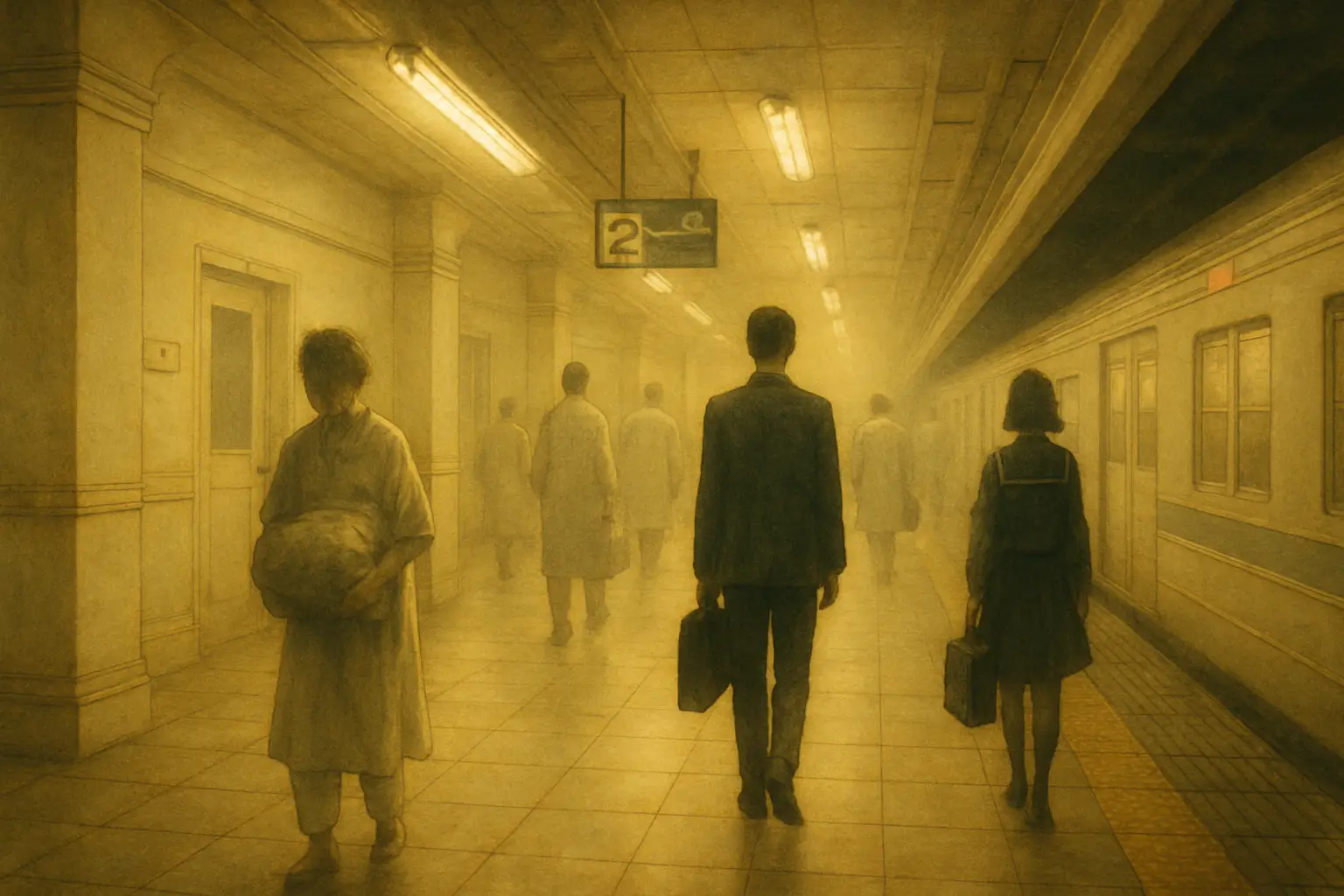
She paused at the threshold and looked back at me. “The train will keep running until you are. Some people ride for days. Some for years. Time works differently here.”
“Where are we going?”
“Nowhere,” she said simply. “And everywhere. It’s the same place, really.”
She stepped off the train, and I watched her walk toward the golden lights. Other figures emerged from the shadows to meet her—men in worn suits, women in hospital gowns, children in school uniforms. All of them carrying bundles or bags or suitcases that seemed too heavy for their frames.
The doors closed. The train began to move again.
I rode that train for what felt like hours, maybe days. Time had no meaning in the endless tunnels. Other passengers came and went at stations I’d never seen before. A businessman carrying a briefcase that leaked papers like tears. A mother clutching an empty baby carrier. A teenager with a backpack full of stones.
All of them asked the same question before they left: “What are you carrying?”
And all of them had the same sad, knowing look when I couldn’t answer aloud.
The realization crept in slowly, like dawn breaking through fog. Each passenger who left carried something visible—briefcases, bundles, bags. But what they were really carrying was invisible. The weight of things undone, unsaid, unforgiven.
Hours passed, or maybe minutes. Time moved like thick honey in those tunnels. I watched passengers board and disembark at stations that couldn’t exist. A station that looked like a hospital corridor. Another that resembled a school playground, empty swings moving in wind that didn’t exist.
The old woman’s question echoed: “What are you carrying?”
I knew, but knowing and accepting were different things. The accident played in my mind like a broken film reel. The child stepping into the crosswalk. My phone buzzing in my hand. The split second when I looked down instead of forward.
But in the train’s strange timelessness, other moments surfaced too. The child’s eyes meeting mine as I knelt beside him. Not accusation there, just… recognition. As if he knew something I didn’t. His small hand gripping mine while we waited for the ambulance.
“Tell okasan (mom) I drew her a picture,” he had whispered in that mix of English and Japanese he used with me. “It’s in my bag. Tell her… tell her I’m not scared.”
I had forgotten those words until now. Buried them under eight months of guilt and sleepless nights.
When the train finally stopped, I felt it in my bones. This was different from the other stations. Through the windows, I could see the familiar concrete of Takadanobaba platform. Real fluorescent lights, not golden glow. The distant rumble of morning trains starting their routes.
I stood, legs unsteady. In my hands was something I didn’t remember holding—a crumpled piece of paper. A child’s drawing in crayon: two stick figures under a yellow sun. At the bottom, careful hiragana characters I couldn’t read, but somehow understood.
The doors opened. Tokyo’s morning air rushed in, carrying the scent of coffee and exhaust and possibility.
I stepped off, and the train pulled away immediately. No delay, no waiting. It disappeared into the tunnel like it had never existed at all.
My phone showed 6:23 AM. November 15th. The same date I had boarded. According to the world, I had never left.
The train pulled away, and I watched it disappear into the morning rush. I knew I would never see it again. My journey was over.
It took me three days to work up the courage. I found her address through the school where I taught—she lived in a narrow apartment building near Ueno, the kind where neighbors never spoke but knew each other’s footsteps.
When she opened the door, her face went very still. Japanese politeness warred with pain in her expression. She knew who I was.
“Sensei,” she said quietly. Not teacher—the word carried weight here. Responsibility. Connection.
I held out the drawing with shaking hands. She stared at it for a long moment, then invited me in with the formal stiffness that grief brings to social interactions.
Her apartment was small, immaculate. Photos of her son covered one wall—school pictures, family outings, everyday moments that now carried the weight of endings. She served tea with the careful ritual that gives structure to impossible conversations.
We sat in silence for several minutes. She studied the drawing, tracing the crayon lines with one finger.
“He drew this the morning of…” she began, then stopped. Started again. “That morning, he was excited about showing me something after school. I was too busy getting ready for work.”
She looked up at me, and I saw something I hadn’t expected. Not blame, but a shared understanding of regret. Of moments that couldn’t be reclaimed.
“The last thing I said to him was ‘hurry up, you’ll be late,'” she whispered. “I never got to see what he wanted to show me.”
The drawing seemed to pulse between us. Evidence of love interrupted, but not erased.
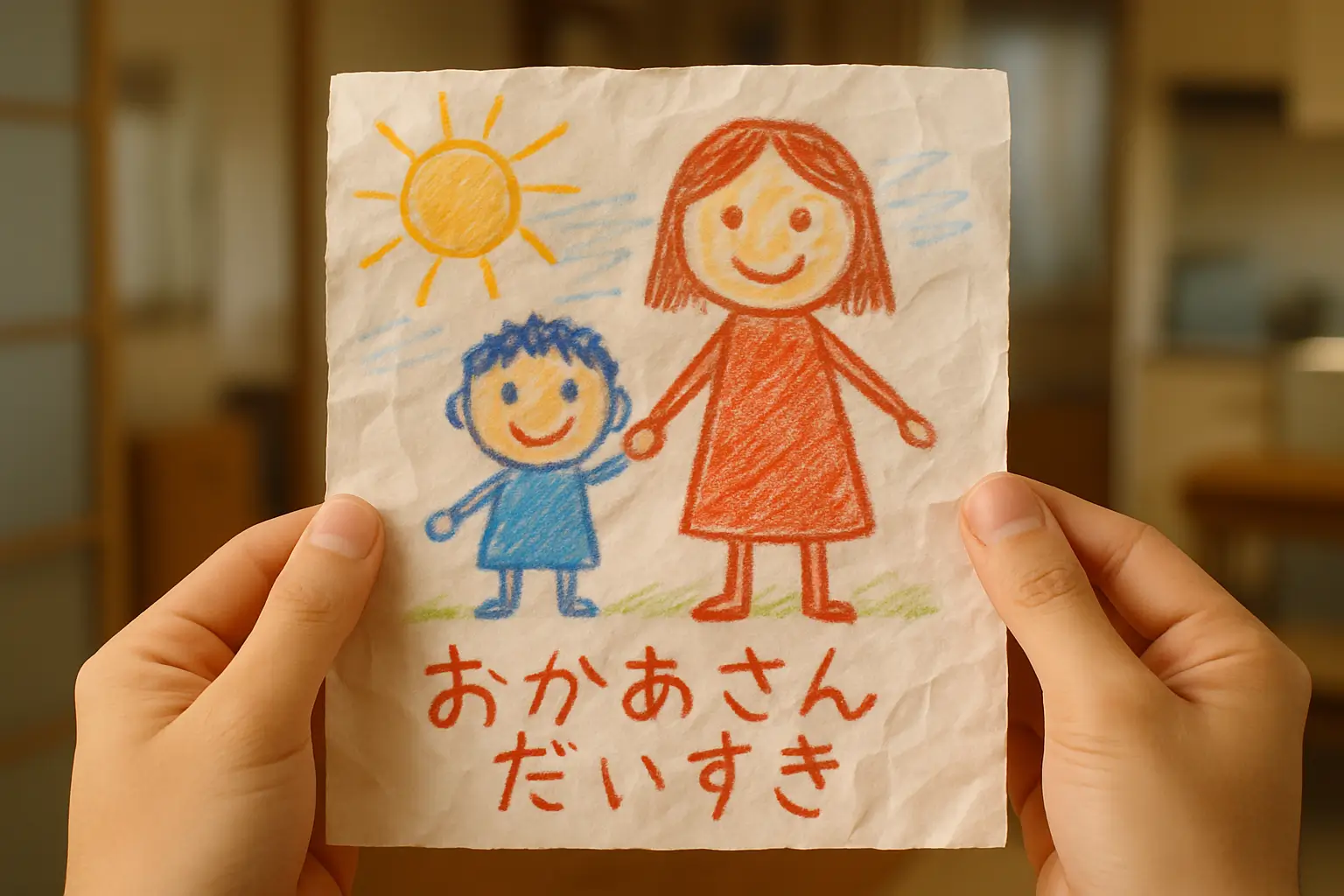
I stayed for exactly thirty minutes—long enough to be respectful, not so long as to intrude on her grief. When I left, she bowed deeply at the door. A gesture that felt like both goodbye and forgiveness, though neither of us spoke the words.
Walking away through the narrow streets, I realized something had shifted. The weight wasn’t gone—it had transformed into something I could carry without being crushed by it.
I never saw the train again. But I find myself at Shinjuku Station sometimes, around 11:47 PM, watching the last cars fill with tired faces. Looking for that particular kind of heaviness that bends shoulders and shadows eyes.
Three months have passed since I wrote this account. I still teach. I still live in the same small apartment. But something fundamental has changed in how I move through the world.
I don’t know if the train was real or if grief finally found a way to resolve itself. I don’t know if that drawing appeared in my hands or if I had been carrying it all along, forgotten in some jacket pocket until the right moment.
What I know is this: the mother and I nod to each other now when we pass on the street. She’s started leaving small offerings at the corner where it happened—not flowers, but toys. Things a child would have liked. The gesture feels Japanese in a way I’m still learning to understand. Not about forgetting, but about honoring what was lost while continuing to live.
Sometimes I catch myself looking for other passengers who carry that weight. The businessman who drinks too much on the evening train. The high school girl who stares at her phone with eyes that have seen too much. The elderly man who rides the same route every day to a destination he never reaches.
I want to tell them about the train. But I know it doesn’t work that way. Some journeys can only begin when you’re ready to take them. Some trains only come when you’ve learned how to see them.
The weight I carried isn’t gone. It’s become something else—not lighter, exactly, but integrated. Part of the landscape of living rather than a boulder crushing everything beneath it.
I think that’s what the old woman meant when she said it gets easier. Not that the sorrow disappears, but that you learn to carry it with grace instead of resentment. To let it teach you something about the preciousness of ordinary moments.
Late at night, when the trains run empty and the city holds its breath between one day and the next, I sometimes wonder who else has ridden that impossible line through the dark places of the heart.
I hope they found what they were looking for.
I hope they learned, as I did, that some destinations can only be reached by first admitting you’re lost.
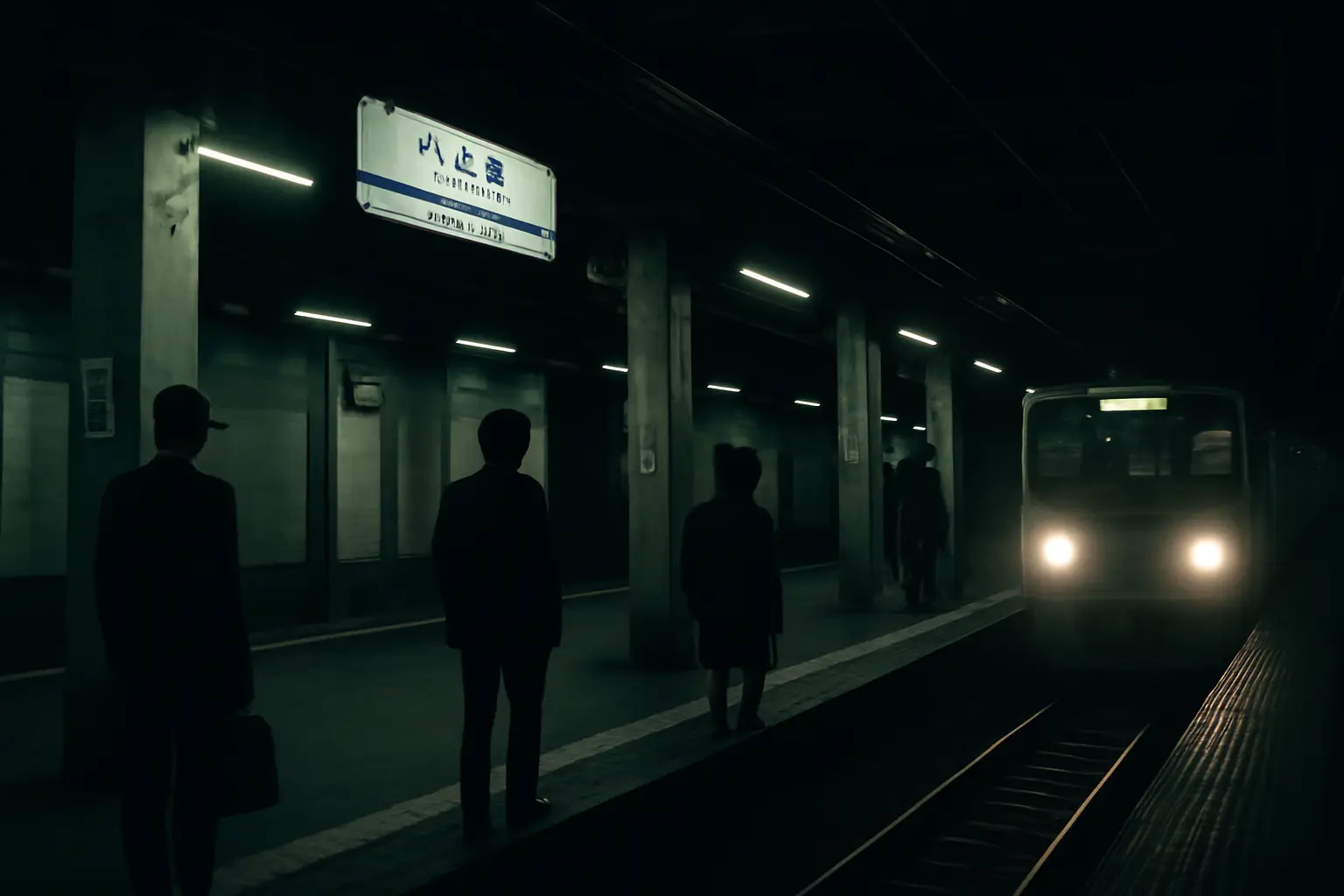
The handwriting ended there. I sat in that internet café for another hour, reading and rereading those pages. The owner brought me tea and asked if I was alright. I must have looked pale.
“The woman who left this,” I asked him. “Do you remember what she looked like?”
He thought for a moment, then shook his head. “Strange thing,” he said. “I remember her coming in, remember her writing for hours. But when I try to picture her face…” He shrugged. “It’s like trying to remember a dream.”
I kept the pages. I’ve carried them with me for two weeks now, and I find myself reading them whenever I’m on the train late at night. Looking for signs, I suppose. Wondering if that mysterious last car still runs its impossible route through the darkness beneath Tokyo.
I haven’t seen it yet. But I have a feeling that when I’m ready—when I’m carrying something too heavy to bear alone—it will find me.
After all, some trains don’t run on schedules.
They run on need.
END

